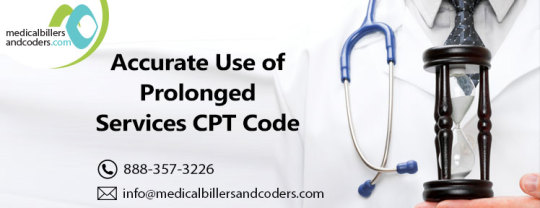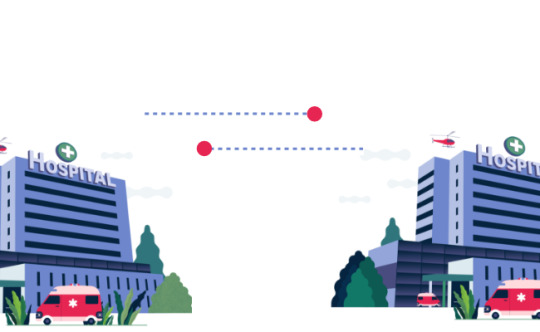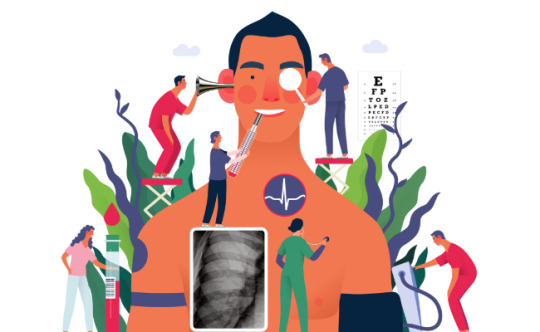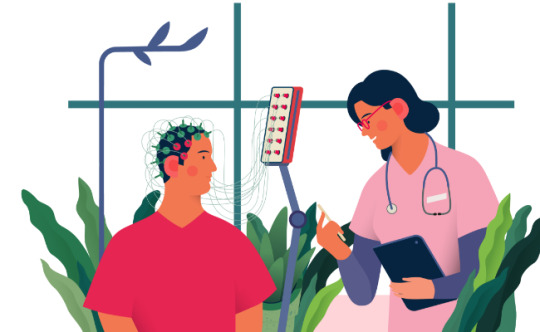#CPT Code 99495
Explore tagged Tumblr posts
Text
CPT Code 99495 For Billing Transitional Care Management -HealthArc
Transitional Care Management (TCM) programs are designed to help patients transition from inpatient to community care. Following a hospitalization or other inpatient facility stay, a patient may need the right care and medical support to deal with the new diagnosis or therapy modification. This transitional care is handled by the physicians and patient’s family.
There are two CPT codes used to report TCM services: CPT code 99495 – moderate medical complexity, requiring a face-to-face contact within 14 days of discharge. CPT code 99496 – high medical complexity, requires a face-to-face contact within seven days of discharge.
1 note
·
View note
Text
Master Your Skills: A Comprehensive Medical Billing and Coding Sample Test to Help You Ace Your Certification Exam!
Title: Master Your Skills: A Comprehensive Medical Billing and Coding Sample Test to Help You Ace Your Certification Exam!
Meta Title: Test Your Knowledge with Our Medical Billing and Coding Sample Test
Meta Description: Get ready to ace your medical billing and coding certification exam with our comprehensive sample test! Test your knowledge and master your skills with this helpful resource.
Introduction: Are you preparing for your medical billing and coding certification exam? Feeling overwhelmed with all the information you need to know? Don’t worry, we’ve got you covered! In this article, we’ll provide you with a comprehensive medical billing and coding sample test to help you test your knowledge and ace your exam with confidence.
Benefits of Taking a Sample Test: Before we dive into the sample test, let’s talk about the benefits of taking a practice exam. Here are a few reasons why testing yourself is essential for exam success: – Identify your strengths and weaknesses – Practice time management skills – Build confidence for the actual exam - Get a feel for the exam format and question types
Medical Billing and Coding Sample Test: Now, let’s take a look at a sample test to help you assess your knowledge in medical billing and coding. Answer the following questions to test yourself:
1. What is the primary purpose of medical coding?
a) To communicate with insurance companies b) To track patient demographics c) To document patient care d) To convert diagnoses and procedures into codes
2. Which code set is used for documenting medical diagnoses?
a) CPT b) ICD-10-CM c) HCPCS d) ICD-10-PCS
3. What is the correct code for a routine preventive medicine examination for an adult?
a) 99201 b) 99386 c) 99441 d) 99495
4. Which of the following is not a role of a medical billing specialist?
a) Verifying insurance coverage b) Preparing financial reports c) Diagnosing medical conditions d) Submitting claims to insurance companies
5. What does the abbreviation EOB stand for?
a) Estimated Out-of-Balance b) Explanation of Benefits c) End of Bill d) Early Outpatient Billing
Answer Key: 1. d) To convert diagnoses and procedures into codes 2. b) ICD-10-CM 3. b) 99386 4. c) Diagnosing medical conditions 5. b) Explanation of Benefits
Congratulations on completing the sample test! How did you do? Remember, the key to success is practice and continuous learning. Use this sample test as a tool to assess your knowledge and focus on areas where you need improvement.
Conclusion: mastering your skills in medical billing and coding is essential for passing your certification exam with flying colors. By taking a sample test like the one provided in this article, you can assess your knowledge, identify areas for improvement, and build confidence for the real exam. Keep practicing, stay focused, and you’ll be well on your way to becoming a certified medical billing and coding professional!
With our sample test, you’re one step closer to acing your certification exam. Good luck!
youtube
https://medicalcodingandbillingclasses.net/master-your-skills-a-comprehensive-medical-billing-and-coding-sample-test-to-help-you-ace-your-certification-exam/
0 notes
Text
Accurate Use of Prolonged Services CPT Code

Billing for Prolonged Services
Physicians have been billing prolonged services for a long time but in recent years the number of codes involved has grown and their requirements have changed, making them a potentially risky area for providers. In this article, we shared coding guidelines for the accurate use of prolonged services CPT code. Before we dive in, it’s worth noting that prolonged services have appeared more than once on the list of audit targets pursued by the HHS Office of Inspector General (OIG).
The necessity of prolonged services are considered to be rare and unusual, the agency has opined in one of its past targeting memos. Agency also mentioned that they will determine whether Medicare payments to physicians for prolonged E/M services were reasonable and made in accordance with Medicare requirements.
Coding Guidelines for Prolonged Services
Most of the time, private insurance will separately reimburse physicians or other qualified healthcare professionals for Prolonged Services when reported in conjunction with companion Evaluation & Management (E/M) codes or other services.
In accordance with The Centers for Medicare and Medicaid Services (CMS) and American Medical Association (AMA), Prolonged Services without Direct Patient Contact (CPT codes 99358-99359) will not be separately reimbursed when reported with Care Management (CM) CPT codes 99484, 99487, 99489, 99490, 99492-99494, G2058 and Transitional Care Management (TCM) CPT codes 99495 and 99496.
Private insurance carriers reimburse Prolonged Services when reported with E/M codes in which time is a factor in determining the level of service in accordance with CPT and or HCPCS guidelines.
Physicians or other qualified health care professionals should report only Prolonged Services beyond the typical duration of the service on a given date, even if the time spent by the physician or other qualified health care professional is not continuous.
Providers should not include the time devoted to performing separately reportable services when determining the amount of prolonged services time. For example, the time devoted to performing cardiopulmonary resuscitation (CPT code 92950) should not be included in prolonged services time. Prolonged service of less than 30 minutes total duration on a given date is not separately reported because the work involved is included in the total work of the evaluation and management codes.
According to CPT and HCPCS, prolonged service codes 99354-99357, 99359, 99415-99416, 99437, 99439, and G0513-G0514, G2212 are considered add-on codes and should not be reported without the appropriate primary code.
Medicare has assigned a status indicator of invalid to code 99417 and developed an HCPCS code to replace it, G2212.
Prolonged services for labor and delivery are not separately reimbursable services. As described in the American Congress of Obstetricians and Gynecologists (ACOG) coding guidelines, prolonged services are not reported for services that do not have a time component such as labor and delivery management.
In accordance with CMS and the AMA, Prolonged Services without Direct Patient Contact (CPT codes 99358-99359) will not be separately reimbursed when reported with CM CPT codes 99417,99484, 99487, 99489, 99490, 99492- 99494, G2058, and TCM CPT codes 99495 and 99496.
According to CPT, modifier 25 may be appended to prolonged services codes if there is adequate supporting documentation that describes the service provided and indicates the service is significant and separately identifiable from another service or procedure on the same date of service.
Prolonged Services CPT Code
+99417 and +G2212:
Add-on code +99417 relies on either 99215 or 99205 as the primary code. It becomes billable exactly one minute after the time threshold for 99215 or 99205 is exceeded. Thus to take 99205 as an example, one unit of +99417 is billable at 75 minutes. The 99205 accounts for the first 74 minutes. This is different from how +G2212 works; +G2212 is used by Medicare payers, though not exclusively. Some commercial payers are accepting +G2212 instead of +99417. This may be because +G2212 cannot be billed until 15 minutes past the time threshold for 99215 or 99205.
Again, taking 99205 as an example, +G2212 becomes billable only 15 minutes after the first 74 minutes covered by 99205 – starting at 89 minutes. Effectively, the use of +G2212 tacks 15 minutes of additional time onto 99215 and 99205 and saves payers that 15 minutes of prolonged service time. While both codes are billed at one unit per 15-minute time block, it’s important to verify applicable payer policies on which code to use. Remember that these prolonged services include non-face-to-face time spent before or after direct patient care if those times can be directly attributed to the patient encounter.
+99415 and +99416:
These two codes are used with office/outpatient E/M codes but are not limited to the level 5 codes only. These codes were revised in the year 2021 to clarify that they are no longer used with the older prolonged service codes 99354 and +99355. +99415 and +99416 describe prolonged service time spent by clinical staff during an E/M visit with direct patient contact. Rather than being reported as one unit per 15-minute block of time, +99415 is reported to cover up to the first 60 minutes of time after the ‘highest time in the range of total time’ of the E/M service, according to CPT guidelines. This follows the logic CPT uses for +99417. For each additional time block of up to 30 minutes, a unit of +99416 is supported. Remember that the CPT guidelines state the clinical staff should be spending time in direct patient contact under physician supervision.
99354 and +99355:
Prior to the year 2021, these codes were used in conjunction with office/outpatient E/M codes when prolonged time thresholds were met. After the year 2021, that function was transferred to the newly implemented add-on codes +99417 and +G2212 (as well as +99415 and +99416 for clinical staff time. This leaves +99354 and +99355 fairly limited usage options, such as outpatient consultation codes 99241-99245 for those commercial payers still reimbursing these codes, and then a variety of less frequently utilized outpatient codes. These include psychotherapy services (90837, 90847), domiciliary/rest home visits (99324-99337), home visits (99341-99350), and care planning services for cognitively impaired patients (99483).
99356 and +99357:
These codes are the inpatient/observation setting counterparts to 99354 and +99355. They were also revised in the year 2021 to account for the implementation of +99417 and +G2212, and the resulting changes to 99354 and +99355. 99356 and +99357 cover the total time spent by a physician or other provider at the patient’s bedside as well as on the patient’s floor or unit in the hospital or nursing facility, that exceeds the time threshold of the primary code (such as initial or subsequent hospital care). Please note that the time spent on the date of service does not have to be continuous.
99358 and +99359:
These two codes cover prolonged service time that does not involve direct patient contact, but was instead spent either before or after face-to-face patient contact. They were revised slightly to spell out that they are not to be used with 99202-99215. Remember that part of the 2021 CPT changes to codes 99202-99215 include new language stating that when these services are reported based on the provider’s time spent on the date of service, the time before and after direct patient contact can be included.
Medical Billers and Coders (MBC) is a leading medical billing company providing complete revenue cycle services. We hope this article has given you a good understanding of the accurate use of prolonged services CPT code. To know more about our billing and coding services, contact us at: [email protected]/ 888-357-3226.
CPT Copyright 2022: American Medical Association.
Reference: National Alliance of Medical Auditing Specialists
#wound care billing services#medical billing#outsource medical billing#medical coding services#revenue cycle management#medical billing and coding services#medical billing services#medical billing company#medical billing service provider#prolonged services
0 notes
Text
2021 CPT Codes by the CMS for Medicare Extension Care Management Programs

Chronic Care Management:
The chronic care management program was virtually untouched by the 2021 Final Rule from CMS. There are three main CPT codes and two add-on CPT codes in 2021 that may be billed by primary care providers for CCM services.

Requirements for CCM:
Non-Complex CCM:
Two or more chronic conditions expected to last at least 12 months (or until the death of the patient)
Patient consent (verbal or signed)
Personalized care plan in a certified EHR and a copy provided to the patient
24/7 patient access to a member of the care team for urgent needs
Enhanced non-face-to-face communication between patient and care team
Management of care transitions
At least 20 minutes of clinical staff time per calendar month spent on non-face-to-face CCM services directed by a physician or other qualified healthcare professional
CCM services provided by a physician or other qualified healthcare professional are reported using CPT code 99491 and require at least 30 minutes of personal time spent in care management activities
Complex CCM:
Shares common required service elements with CCM but has different requirements for:
Amount of clinical staff service time provided (at least 60 minutes)
The complexity of medical decision-making involved (moderate to high complexity)
CPT Reimbursement Codes for CCM Service:
Non-complex CCM:
CPT Code 99490– This code requires that patients must have two or more chronic conditions, as well as documented consent to enroll in the program AND receive at least 20 minutes of CCM services from clinical staff within a given month. A personalized care plan, which shows an assessment of all patient factors and identifies gaps and barriers to be addressed, is also required. Reimbursement Rates – CPT Code 99490 – $42/patient/month.
CPT Code 99439 (formerly G2058) -This code allows providers to bill for each additional 20 minutes spent for Basic CCM services in a given month, up to 2 times. For example, if CCM services were provided for at least 40 minutes with a patient in a given month that was not Complex, 99490 ($42) and 99439 ($38) would be billed together for that month. Reimbursement Rates – CPT Code 99439 (formerly G2058) – $38/patient/month.
Complex CCM:
CPT code 99487– This code has a higher rate of reimbursement than the Basic CCM CPT code. To bill using this code requires moderate or high complexity in medical decision making AND acknowledgment by both patient & provider of an acute exacerbation (generally defined as a sudden worsening of a patient’s condition that necessitates additional time and resources). The patient must receive at least 60 minutes of services from clinical staff within a given month to bill for this code. Reimbursement Rates – CPT Code 99487 – $93/patient/month.
CPT code 99489 – The same as with the Basic Chronic Care Management code, the Complex Chronic Care Management code also has an add-on CPT code to cover time spent beyond 60 minutes. It allows for billing for each additional 30 minutes spent for Complex CCM services within a given month. Reimbursement Rates – CPT Code 99489 – $45/patient/month.
Transitional Care Management:
Transitional Care Management (TCM) services address the hand-off period between the inpatient and community settings. After a hospitalization or other inpatient facility stay (e.g., in a skilled nursing facility), the patient may be dealing with a medical crisis, new diagnosis, or change in medication therapy. Family physicians often manage their patients’ transitional care.

Requirements for TCM:
Contact the beneficiary or caregiver within two business days following a discharge. The contact may be via the telephone, email, or a face-to-face visit. Attempts to communicate should continue after the first two attempts in the required business days until successful.
Conduct a follow-up visit within 7 or 14 days of discharge, depending on the complexity of medical decision-making involved. The face-to-face visit is part of the TCM service and should not be reported separately.
Medicine reconciliation and management must be furnished no later than the date of the face-to-face visit.
Obtain and review discharge information.
Review the need for diagnostic tests/treatments and/or follow up on pending diagnostic tests/treatments.
Educate the beneficiary, family member, caregiver, and/or guardian.
Establish or reestablish referrals with community providers and services, if necessary.
Assist in scheduling follow-up visits with providers and services, if necessary.
CPT Reimbursement Codes for TCM Service:
CPT code 99495 – moderate medical complexity requiring a face-to-face visit within 14 days of discharge. Reimbursement rate – $175.76/patient/month.
CPT code 99496 – high medical complexity requiring a face-to-face visit within seven days of discharge. Reimbursement rate – $237.11/patient/month.
Allowed reported services alongside TCM services include,
Prolonged services without direct patient contact (99358-99359);
Home and outpatient international normalized ratio (INR) monitoring (93792-93793);
End-stage renal disease (ESRD) services for patients ages 20 years and older (90960-90962, 90966, or 90970);
Interpretation of physiological data (99091); and
Care plan oversight (G0181-G0182).
Remote Patient Monitoring:
RPM involves the collection and analysis of patient physiologic data that are used to develop and manage a treatment plan related to a chronic and/or acute health illness or condition.

Requirements for RPM:
To qualify for CMS reimbursements for utilizing the RPM services efficiently, the service providers and hospitals need to ensure the following:
Medicare part B patients are imposed 20% of copayment (renouncing the copayments regularly can trigger penalties under the Federal Civil Monetary Penalties Law and also the Anti-Kickback Statute)
Patients must take the remote monitoring services and are required to monitor for a minimum of 16 days to be applicable for a billing period.
The RPM services must be ordered by skilled physicians or other qualified healthcare experts.
Data must be wirelessly synced for proper evaluation, analysis, and treatment.
CPT Reimbursement Codes for RPM Service:
CPT code 99453 – It is a one-time practice expense reimbursing for the setup and patient education on RPM equipment. This code covers the initial setup of devices, training and education on the use of monitoring equipment, and any services needed to enroll the patient on-site. Reimbursement rate – $18.77/patient/month.
CPT code 99454 – This code covers the supply and provisioning of devices used for RPM programs, and the code is billable only once in a 30-day billing period. Reimbursement rate – $64.44/patient/month.
CPT code 99457 – This code covers the direct monthly expense for the remote monitoring of physiologic data as part of the patient’s treatment management services. To receive reimbursement, the physician, QHP or other clinical staff must provide RPM treatment management services for at least 20 minutes per month. Reimbursement rate – $51.61 (non-facility); $32.84 (facility) /patient/month.
CPT code 99458 – This code is an add-on code for CPT Code 99457 and cannot be billed as a standalone code. This code can be utilized for each additional 20 minutes of remote monitoring and treatment management services provided. Reimbursement rate – $42.22 (non-facility); $32.84 (facility) /patient/month.
Principal Care Management:
PCM codes are intended to cover services for patients with only one complex chronic condition that requires management by a specialist. Like other chronic care management (CCM) codes (chronic care management, transitional care management), the PCM codes are intended to reimburse physicians for the additional work they do to take care of high-risk, complex patients. This includes the extra time and work required for medication adjustments, creating a care plan, patient follow-up, and more.

Requirements for PCM:
One complex chronic condition lasting at least 3 months, which is the focus of the care plan,
The condition is of sufficient severity to place the patient at risk of hospitalization or has been the cause of recent hospitalization,
The condition requires development or revision of a disease-specific care plan,
The condition requires frequent adjustments in the medication regimen, and/or the management of the condition is unusually complex due to comorbidities
CPT Reimbursement Codes for PCM Service:
CPT Code G2064 – requires 30 minutes of provider (allergist, NP, PA) time each calendar month to care for the patient. This code can be billed monthly (in addition to appropriate E/M codes) and approximate reimbursement is $52/patient/month.
CPT Code G2065 – requires 30 minutes of clinical staff time directed by a provider each calendar month for patient care. Provider supervision does not require the provider to be onsite while clinical staff performs PCM services. This code can be billed monthly (in addition to appropriate E/M codes) and approximate reimbursement is $22/patient/month.
Annual Wellness Visit:
The Annual Wellness Visit (AWV) is a yearly appointment with your primary care provider (PCP) to create or update a personalized prevention plan. This plan may help prevent illness based on your current health and risk factors. Keep in mind that the AWV is not a head-to-toe physical.

Requirements for AWV:
For G0438 (initial visit),
Billable for the first AWV only.
The patient must not have received an IPPE within the past 12 months.
Administer a Health Risk Assessment (HRA) that includes, at a minimum: demographic data, self-assessment of health status, psychosocial and behavioral risks, and activities of daily living (ADLs), instrumental ADLs including but not limited to shopping, housekeeping, managing own medications, and handling finances.
Establish the patient’s medical and family history.
Establish a list of current physicians and providers that are regularly involved in the medical care of the patient.
Obtain blood pressure, height, weight, body mass index or waist circumference, and other measurements, as deemed appropriate.
Assess a patient’s cognitive function.
Review risk factors for depression, including current or past experiences with depression or mood disorders.
Review patient’s functional ability and safety based on direct observation, or the use of appropriate screening questions.
Establish a written screening schedule for the individual, such as a checklist for the next 5 to 10 years based on appropriate recommendations.
Establish a list of risk factors and conditions for primary, secondary, or tertiary intervention.
Provide personalized health advice to the patient, as appropriate, including referrals to health education or preventive counseling services and programs.
At the patient’s discretion, furnish advance care planning services.
Patients are eligible after the first 12 months of Medicare coverage.
For services within the first 12 months, conduct the Initial Preventive Physical Exam (IPPE), also referred to as the Welcome to Medicare Visit (G0402).
For G0439 (subsequent visit),
Billable for subsequent AWV.
The patient cannot have had a prior AWV in the past 12 months.
Update the HRA.
Update the patient’s medical and family history.
Update the current physicians and providers that are regularly involved in providing the medical care to the patient, as developed during the initial AWV.
Obtain blood pressure, weight (or waist circumference, if appropriate), and other measurements, as deemed appropriate.
Assess a patient’s cognitive function.
Update the written screening schedule checklist established in the initial AWV.
Update the list of risk factors and conditions for which primary, secondary, and tertiary interventions are recommended or underway.
Provide personalized health advice to the patient, as appropriate, including referrals to health education or preventive counseling services and programs.
At the patient’s discretion, the subsequent AWV may also include advance care planning services.
CPT Reimbursement Codes for AWV Service:
The four CPT codes used to report AWV services are,
G0402 Initial Preventive Physical Exam – This code is used for patients visiting within 12 months after enrolling in Medicare.
G0438 Initial Visit – This visit is eligible within 11 calendar months from the date of IPPE.
G0439 Subsequent Visit – This code is used for every subsequent visit. Patients are eligible for this benefit every year after their Initial AWV.
CPT 99497/99498 – Patients are eligible for an Advance Care Planning (ACP) at any time. But if performed during an AWV, the patient has no copay.
Behavioral Health Integration:
Integrating behavioral health care with primary care (“behavioral health integration” or “BHI”) is an effective strategy for improving outcomes for millions of Americans with behavioral health conditions. Medicare makes separate payments to physicians and non-physician practitioners for BHI services they furnish to beneficiaries over a calendar month service period.

Requirements for BHI:
Any mental or behavioral health condition being treated by the billing practitioner, including substance use disorders, that, in the clinical judgment of the billing practitioner, warrants BHI services.
The diagnosis or diagnoses could be either pre-existing or made by the billing practitioner and may be refined over time.
CPT Reimbursement Codes for BHI Service:
The CPT code used to report BHI services is,
CPT Code 99494 – Initial or subsequent psychiatric collaborative care management, each additional 30 minutes in a calendar month of behavioral health care manager activities, in consultation with a psychiatric consultant, and directed by the treating physician or other qualified healthcare professional.
References:
https://signallamphealth.com/2021-medicare-cms-chronic-care-management-ccm-cpt-code-updates/
https://www.cms.gov/newsroom/fact-sheets/final-policy-payment-and-quality-provisions-changes-medicare-physician-fee-schedule-calendar-year-1
https://college.acaai.org/new-principal-care-management-cpt-codes/#:~:text=G2064%20requires%2030%20minutes%20of,is%20%2452%2Fpatient%2Fmonth
https://www.aafp.org/family-physician/practice-and-career/getting-paid/coding/transitional-care-management.htm
https://www.cms.gov/Outreach-and-Education/Medicare-Learning-Network-MLN/MLNProducts/Downloads/BehavioralHealthIntegration.pdf
#healthcare technology#Virtual Care#ChroniccareManagement#telehealth#annual wellness visit#transistional care
0 notes
Text
Cpt 99496 | HealthArc
Do you want to control your out-of-hospital care? HealthArc provides transitional care management software enhances transitional care procedures for chronically sick patients who have just been discharged from the hospital. Our HIPAA-compliant healthcare platform is designed in accordance with the most recent CMS recommendations to improve patient outcomes, reduce rehospitalizations, and streamline billing for TCM CPT Code 99495 and CPT Code 99496. We are one of the top digital health platforms providing technologically advanced cellular devices and a monitoring dashboard to both patients and clinicians. Contact us today to schedule a demo and learn how our TCM platform works.
1 note
·
View note
Text
Once a patient is discharged from the hospital, getting him/her back to good health without any risks of hospital readmissions becomes the foremost responsibility of a caregiver. To achieve this goal, a care model, known as TCM is introduced by the Centers for Medicare and Medicaid Services (CMS). Transitional Care Management (TCM) is an important component of the transitional healthcare model and medical management addressing the vital aftercare period once a patient is discharged from the hospital.
2 notes
·
View notes